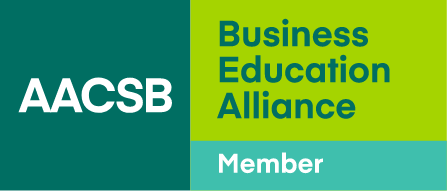Online Teaching Effectiveness: Tawnya Means Shares Expert Insights
What does it mean to be effective at online teaching today? How can faculty best take advantage of technological tools in learning systems to create a strong sense of engagement among students? As facilitator and content creator for AACSB’s Online Teaching Effectiveness Seminar, Tawnya Means, points out in our interview with her, “there is no one right way to teach online”; the capabilities for interacting online are nearly limitless. The challenge, then, is for faculty to know what is available, determine what best fits their course needs and level of comfort, and ensure that students are benefiting from the delivery. Read on to gain in-depth insights from Means herself.
What makes “Online Teaching Effectiveness” distinct from simply online teaching? In other words, “effectiveness” implies that there is an inherent challenge or problem with online teaching. What is that challenge?
There are several challenges with teaching online. One is that faculty are mostly used to the concept of preparing for and then walking into a face-to-face classroom. They know what to expect, they know how to interact with students, they usually have confidence in the content they are teaching, and they know a lot about how to make sure students are understanding what they are teaching. Interaction is natural, as it uses the same communication strategies we are all used to in our everyday interactions with people we meet.
When you move to online teaching, you still have content, but you may need to structure it differently. You have a variety of students participating from a wide range of locations and contexts, but you don’t have a ready way to “see” who they are and engage with their personality in the same way you do when you are physically located in the same time and place. Assessing whether students are consuming the content appropriately and are understanding what you are teaching is more of a challenge and requires a different way of working. In addition, the communication strategies and the way the instructor portrays their presence (who they are and that they are available and engaged) are very different than what we are used to in our daily lives.
Online teaching, and learning, has been around for decades now. How has the technology to teach online become more innovative?
First, there are many more options for teaching online. This can be both a great benefit and a challenge. Finding the right tool or method to fit how and what you want to teach is important. Keeping the tools and methods used to an appropriate number will help prevent overload and confusion for students. The tools that support communication are becoming easier to use and more available. Video and audio for sharing content, communication and discussion capabilities to encourage engagement, and cloud-based applications provide students and instructors almost unlimited capabilities to “do” learning activities, and to share what they see and are learning with others, both in their home and on the go.
Are there ways in which online teaching can be more advantageous than classroom teaching?
Absolutely! While online and blended teaching can remove the time and space constraints of a physical space (allowing for better or different room scheduling, additional course offerings, flexible schedules), these types of teaching can also give students more time for students to reflect on, interact with, and review the learning materials as needed, as well as to apply what they are learning.
As one example, instructors can create video tutorials for students to watch, pause, take notes, replay, and even speed up. This customization of the learning experience for students is all done on a personalized level by the student, according to their needs, which is impossible to accomplish in more traditional classroom experiences. In addition, the assessment that happens in the online course, if well designed and aligned to the learning objectives and course activities, can be personalized and can be a better indicator of student learning. In addition, the data collected on student learning is digital, so it more easily can be used to provide reporting on aggregated learning for a course, program, or cohort of students.
What are some challenges—and benefits—of teaching multigenerational, multicultural audiences via learning management systems?
The challenges are similar to a traditional classroom, in that you will have a wide range of prior experiences and contexts for the students. In addition, you will have a range of capabilities for technology savvy among students. While many think that younger generations are more adept at using technology, this is not always the case for learning with technology. It is important to be aware of the technological challenges that students may have and make every attempt to plan ahead and have back-up plans in case of technical failures. Communication and preparation are the key to success here.
One of the benefits, however, is that often the communication channels in a learning management system can help remove any cultural or age biases that might be found in a traditional classroom where people are judged more on appearance than on what they are saying. Another benefit is that students’ prior experiences can be brought into the learning activities. For example, in a management course where some students have actually had experience dealing with human resource issues, those students can be asked to share what they have learned and mentor students who have not yet been in those contexts.
You played a significant role in developing AACSB’s online seminar on Online Teaching Effectiveness. What was your thought process in designing an online course about online teaching?
I wanted to be sure that anyone participating in the course saw that there is no one right way to teach online. There are basic principles and concepts that are important to identify, consider, and then adapt to your context, content, and students. One way to accomplish this was to bring in a range of content developers and use a variety of technologies and techniques to teach the content. In addition, I wanted to set up a community where the participants can learn just as much from thoughtful discussion and reflection with each other as they would from me or the content developers. In the first round, I believe we have accomplished much of this, but just as is the case with any online course, it will require review of participant feedback and iterative updates to be the best course possible.
How will instructors of online courses benefit from the OTE seminar?
My hope is that they benefit the most from reflection on the content, interaction with others in the course, and long-term application of what they have considered and learned through the process. Additionally, I know they will benefit from the actual experience of learning online. As they prepare their own online courses, they will have empathy for the students they will teach. They will be prepared to develop appropriate online content, structure the course and learning activities effectively, and provide clarity of instructions and navigation, and they will also understand the challenges of keeping up with deadlines, communicating using digital tools, and interacting with people outside of their typical communication channels and methods.




